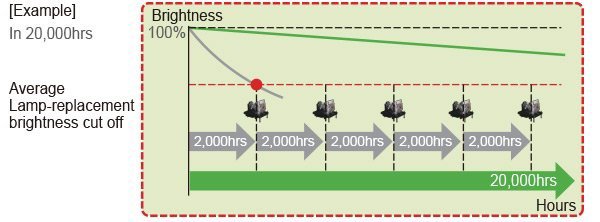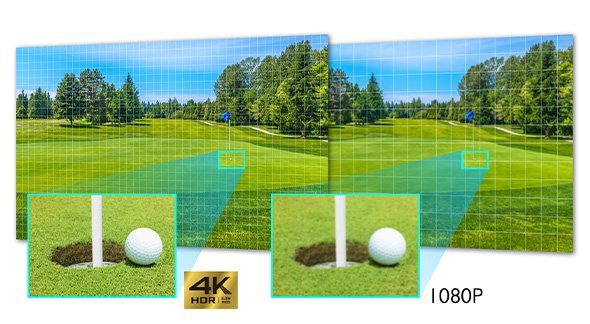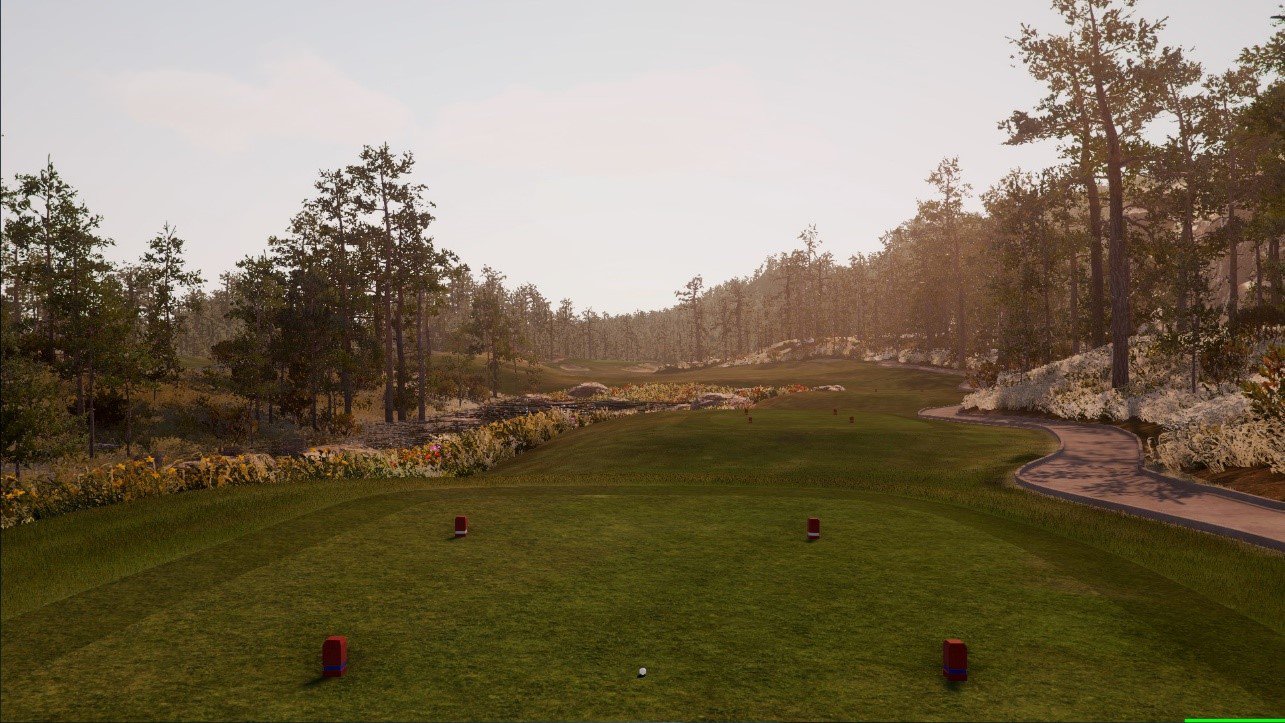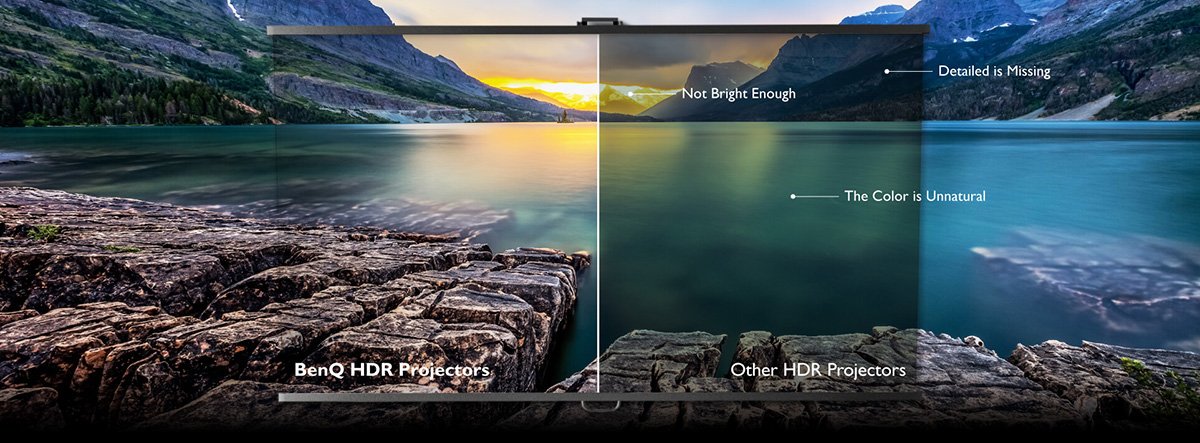How to Pick the Right Projector for Your Golf Simulator Setup?
In 2024, the market for golf simulators exploded with new affordable launch monitors and projectors enabled people stuck in their homes to easily convert bedrooms, basements, and even garages into multipurpose entertainment areas. Projectors are a key part of providing a realistic golf course on the screen, and making you feel like you are playing a real course. In the last few years, innovative technology and products are now available to fit any budget.
What should you be looking for when evaluating the best projector for your simulation space? Here are 5 key factors to consider:
- What Light Source: lamps, LED, or lasers?
- How do short throw projectors avoid creating shadows?
- What are the best resolutions & aspect ratio for golf simulation?
- Maintenance free projectors vs. traditional paper filters
- How to determine a projector color accuracy for a realistic image
Best light source for a golf sim projector
For many years, mercury lamps were the only option for golf simulators. These lasted a few thousand hours before having to be replaced. But in the last couple of years, these lamps are being phased out, and replaced by new LED and laser light sources. While you can still buy mercury powered golf sim projectors like the BenQ MX825STX, there are several advantages of LED and laser such as:
- Up to 30,000-hour life – this eliminates the need to replace expensive mercury lamps.
- Instant on & off – A LED or laser projector is ready to start playing in seconds.
- Higher color accuracy – LED and lasers provide higher color accuracy than lamp models.
- LED projector prices can be as low as similar mercury lamp projectors.

For smaller spaces, the new 4LED golf simulation projectors are especially attractive with pricing starting at under $1000. With LED light source engines, the color saturation is higher than lamps, making the projector look brighter on the screen. Here is an example of how a golf simulator projector compares with a lamp-based home theater projector at the same resolution using data from Projectorcentral.com.
Feature |
BenQ LH600ST |
Epson Home Cinema 3800 |
Feature Resolution | BenQ LH600ST 1080p | Epson Home Cinema 3800 1080p |
Feature Short Throw Lens | BenQ LH600ST Yes | Epson Home Cinema 3800 No |
Feature Light Source | BenQ LH600ST 4LED Engine | Epson Home Cinema 3800 Mercury Lamp |
Feature Lamp Life | BenQ LH600ST 20,000 / 30,000 hours | Epson Home Cinema 3800 3500 /5000 hours |
Feature Power Usage | BenQ LH600ST 215 watts | Epson Home Cinema 3800 430 watts |
Feature Price | BenQ LH600ST $1099 | Epson Home Cinema 3800 $1460 |
Do I need a short throw projector?
Like a digital SLR camera there are different lenses for projectors, and for golf simulation projectors, “short throw” projectors enable you to mount the projector closer to the screen. While they are more expensive than a regular throw projector, they are helpful in avoiding shadows, especially when mounted on the ceiling.

Especially in smaller spaces like a garage, where you may have a lower ceiling, the right short throw projector can avoid the risk of creating shadows – or being hit with a stray ball or club with a little planning. To help you figure out what projectors will fit in your room, you can go to the BenQ Golf Sim Planning tool and try out different projectors to fit your screen size and launch monitor to ensure you have the right projector mounted in the right spot.
Best Resolution and Aspect Ratio for Golf Simulation

The larger your screen – the more important resolution is for you to see the details on the screen. This is especially important on newer golf simulators that use advanced 4K software such as GS Pro or E6, where the software provides amazing realism that can display minute details like morning fog, pond reflections, and realistic azaleas at Augusta.

First – to render these details, you need pixels – a lot of them. Projectors come in a wide variety of resolutions that can be confusing, so to help you understand the difference – just use the chart below for how many pixels they have, and how many pixels there are for a 200-inch diagonal screen (a popular size for many DYI setups).
Resolution |
Total Pixels |
Pixel Per Inch PPI on a 200” Screen |
Resolution 4K UHD | Total Pixels 8,294,400 | Pixel Per Inch PPI on a 200” Screen 22.03 |
Resolution WUXGA | Total Pixels 2,304,000 | Pixel Per Inch PPI on a 200” Screen 11.3 |
Resolution 1080P | Total Pixels 2,073,600 | Pixel Per Inch PPI on a 200” Screen 11 |
Resolution WXGA | Total Pixels 1.024,000 | Pixel Per Inch PPI on a 200” Screen 7.5 |
Resolution XGA | Total Pixels 480,000 | Pixel Per Inch PPI on a 200” Screen 5 |
The pixel density is a key element for the software to be able to render the details of a hole realistically. As you can see, a 4K UHD projector delivers the highest pixel density and pixels and is also ideal for use as a home theater or entertainment projector since most video content uses this resolution. Both 1080p and WUXGA offer solid pixel density, and for smaller screens WXGA is the most popular lower resolution projector sold for golf simulators.
What is the best aspect ratio – 1:1 / 4:3 / 16:10 / 16:9?
They are all good. The major difference for golf simulators is how the width of your golf sim enclosure. For spaces like garages or restaurants where you have limited wall space and taller ceilings, a 1:1 aspect ratio is very popular. The traditional 4:3 aspect ratio impact enables a wider image with the same screen height as a 1:1 screen, and the widescreen 16:9 and 16:10 are best if you want to show movies – or watch golf on your screen.
Today, the BenQ golf simulation projectors have new “Screen Fill” technology that adapts the projector resolution to the aspect ratio of your impact screen. So now all you need to do is decide how much realism (e.g., resolution) you want, and the screen fill feature will take advantage of the projector’s pixel density to reformat the screen to your aspect ratio. For example – you can use a 4K UHD projector with a 4:3 or 16:10 and still get extremely high pixel density – and realism – on whatever impact screen you want. So, get the highest resolution you can under your budget and don’t worry about the aspect ratio.
Maintenance free projectors vs. cleaning filters
Most projector models that use LCD panels like Panasonic and Epson have filters that must be kept clean to keep the projector from overheating. The problem – these filters need to be maintained as often as every month, and if they get clogged – all play stops until the filter is vacuumed, washed, or replaced.
By contrast, golf simulator projectors from BenQ use a sealed engine to keep the dust out – so it doesn’t require a filter. BenQ tests these models using an industry standard IP5X certification to ensure that the projector will operate even when dusty – so you never have to climb up a ladder and clean a filter during a practice session or when playing a course with your friends.
Determining projector color accuracy

If you want the same bold and dynamic colors on your projector screen as on your monitor, then you need to look at the color accuracy of the projector. This ensures that your fairways look like grass found on a real golf course and doesn’t look like an arcade game.
For golf simulator projectors – especially 4000 lumens or brighter – the color accuracy can vary dramatically from one model to another. This is because many traditional classroom and meeting room projectors are focused on brightness – and aren’t designed to render complex colors found in a golf sim. The best way to ensure a good picture is to measure color accuracy using industry-standard specifications such as Rec.709. You will also want to look for a projector that can handle HDR video as well.
How Much Does a Good Golf Simulator Projector Cost?
While you can find some lamp-based models for about $400, the better golf simulation projectors cost between $1000 and $5000. Compared to the cost of the camera and impact screen, this is one of the less expensive components – but can make a significant difference in how your simulator looks, plays – and how much the room is used for watching Tin Cup, live or recorded tournaments, and streaming golf content in 4K resolution. Here is a breakdown of the cost and features of the four models mentioned in this article that have the right throw ratios for golf simulation placement.
|
BenQ LH600ST | BenQ LU710 | BenQ LU935ST | BenQ LK936ST |
Brightness | 2,500 Lumens | 4,600 Lumens | 5,500 Lumens | 5,100 Lumens |
Resolution | 1080p | WXGA | WXGA | 4K UHD |
# of Pixels | 2 million | 2.3 million | 2.3 million | 8.3 million |
Lamp Type | 4LED | Laser | Laser | Laser |
Lamp Life | 20,000 hours | 20,000 hours | 20,000 hours | 20,000 hours |
Screen Fill Aspect Ratio | 1:1 / 4:3 / 16:10 / 16:9 | 4:3 / 16:10 / 16:9 | 4:3 / 16:10 / 16:9 | 4:3 / 16:10 / 16:9 |
Filter-Free | Yes | Yes | Yes | Yes |
Colour Accuracy | 95% Rec.709 | 92% Rec.709 | 92% Rec.709 | 92% Rec.709 |
Est. Street Price | $1,099 | $1,699 | $3,999 | $4,899 |
BenQ has trained staff to help you find the perfect golf simulator projector – within your room size and budget. To help you make the best decision, you can reach out to one of our experts to set up anything from a chat to a complete online demo, to help you find the right projector for your needs.
You may also like
-
Golf Simulator Projector Resources
What is the best place to mount a golf simulator projector?
A guide to help understand where and why projectors are placed in front or overhead in a Golf Simulator setup
-
Golf Simulator Projector Resources
What are the best projectors for the Uneekor golf simulator system?
-
Golf Simulator Projector Resources
What Is the Perfect Projector for a SkyTrak Golf Simulator?
The best projector for SkyTrak Golf Simulators for any budget
-
Golf Simulator Projector Resources
Why a 4K DLP Laser Projector Is the Only Way to (Simulate) Play against Tiger Woods?
-
Golf Simulator Projector Resources
What are the best projectors for a garage golf simulator?
Read about different options for mounting your projector for your garage golf simulator
-
Golf Simulator Projector Resources
How much does a golf simulator projector cost in 2024?
How throw ratio, resolution, brightness, and light source impact the cost of your golf simulator projector and your different options depending on your budget